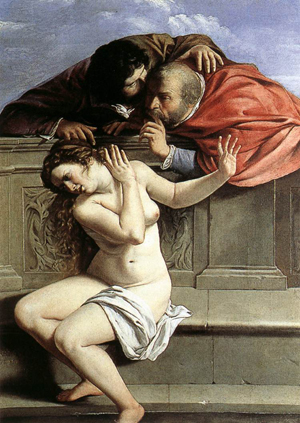In 17th century Rome, the Baroque painter Orazio Gentileschi gave all his children the finest art education available. But only one of them—his daughter Artemisia—developed into an artist. In fact, Artemisia matched and surpassed her father's skills, and became the first female member of the Academy of Design in Florence and the only woman to follow and innovate upon the tradition of painting established by Caravaggio.
What creates a great artist like Gentileschi, Van Gogh or Manet? Talent or training?
Artists are both born and taught, says Nancy Locke, associate professor of art history at Penn State. "There is no question in my mind that artists are born," says Locke. Many artists arrive in the world brimming with passion and natural creativity and become artists after trying other vocations. Before he had devoted himself to art, Van Gogh tried to be a minister among poor miners in Belgium. "He just frightened and overwhelmed people," says Locke. "He was too intense to act effectively in that capacity."

Susanna and the Elders by Artemisia Gentileschi Web Gallery of Art/
Artists are also made, she says. They require training, education and a culture of other artists, often an urban culture, says Locke. "Put an artist in isolation and nobody can learn anything from the work." A craftsman masters a skill, but an artist ventures beyond to innovate. "Artists have to be in touch with other artists, building on what other artists have done," says Locke.
Artists must learn a tradition to challenge it, so artists are products of their times and context, both artistic and social, she adds. Like natural talent, the vision is innate. Yet the way that vision comes to fruition depends upon the artist's time and place, the surrounding artistic tradition, training and life experience.
"You can take an artist who doesn't have the visionary quality of a Manet," Locke notes, "someone who really wants to be an artist and is less talented and that person can be a follower, can be a technician, can learn a craft and can turn out something that looks like an Impressionist painting. But that person will never have the vision of a Seurat, Van Gogh or someone who's a real innovator."
Yet, says Locke, Manet's art, which challenged the Renaissance works and sowed the seeds of Impressionism, owes as much to his environment—his particular time and place—as it does to his inborn talent. "If you take Manet away from Paris in the late 19th century, if you stick him out in the woods somewhere and nobody sees his art, it wouldn't be very important. It's important because other artists and critics made it important."
The necessity of both natural-born talent and societal influences in shaping an artist rings true in the life of Artemisia Gentileschi, she adds. In the early 17th century, women were not allowed to attend all-male art academies and could only become artists if they learned fundamental skills privately, usually from a relative or through lessons.
At age 18, Artemisia Gentileschi, a promising young painter, was initially denied entry into all-male professional art academies. As a result, her father hired the Tuscan painter Agostino Tassi to privately tutor her, but after Tassi raped her, Artemisia endured a painfully humiliating public trial—including being tortured to test if she was lying—that resulted in Tassi's one-year prison sentence.
Gentileschi's talent, Caravaggio's technique and her life experience is all apparent in her work. Susanna and the Elders, for example, illustrates the Biblical story of a virtuous woman who is sexually harassed by village elders. "If you're a woman and you've been taken advantage of the way Artemisia was, you have a sense of the vulnerability of Susanna. That's a very different approach that comes out of life experience."
Gentileschi's painting, Giuditta che decapita Oloferne (Judith beheading Holofernes) (1612-1613), depicts the Biblical heroine Judith and her handmaiden gruesomely beheading the Assyrian general Holofernes. The painting is widely interpreted as Artemisia's revenge for the violence she suffered.
Perhaps her success was her greatest revenge. She moved to Florence and became the first female painter to enter the city's Accademia del Disegno. She became known for her paintings of biblical heroines and for mastering the contrast of light and dark.
Yet, despite Gentileschi's artistic success, she could not pass on her gift. Although she taught her two daughters to paint, there is no evidence that either of them became an artist.
—Lisa Duchene
Reprinted with permission from Penn State University: http://www.rps.psu.edu/probing/artist.html






Comments